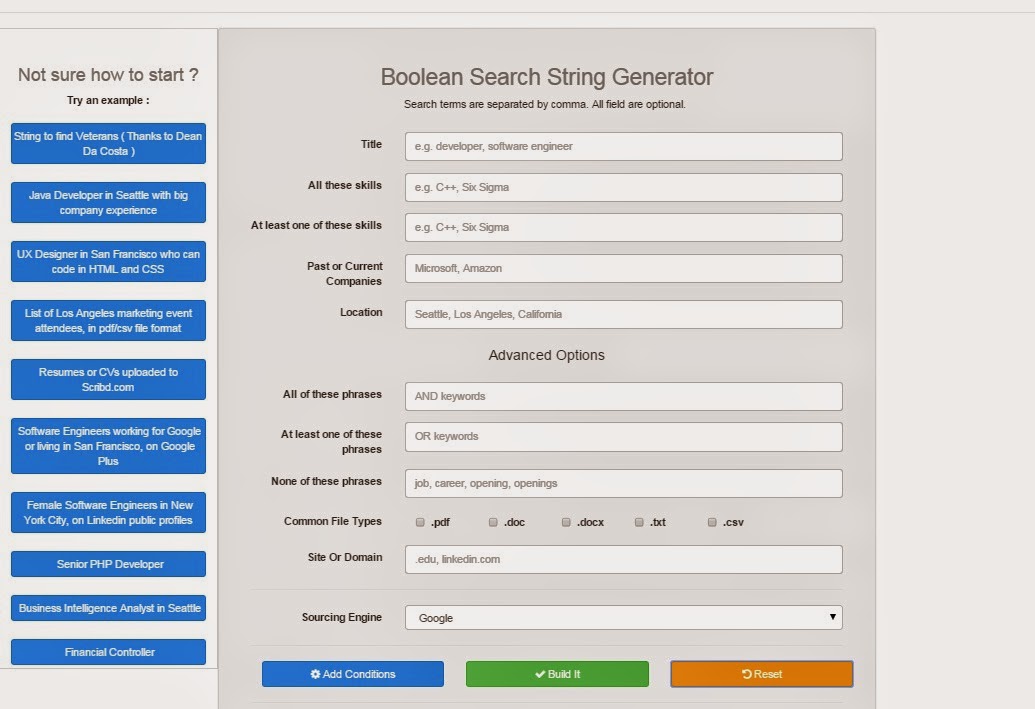

You will learn how to use Boolean operators to connect your search words together to either narrow or broaden your set of results. A quick overview of the three core Boolean search operators and three core Boolean query modifiers: AND, OR, NOT, Asterisk, Parentheses, Quotation Marks. This tutorial is specially designed to help you learn Boolean search strings as quickly and efficiently as possible. Boolean sourcing is an effective way for recruiters to get more advanced results when they are searching for candidate information from all over the web (Google, LinkedIn, StackOverflow etc.) There are a number of other Boolean modifiers you can use to enhance and further refine your Boolean searches, as well as a number of additional guidelines for using Boolean in different other search engines and databases outside of LinkedIn.Identifying qualified candidates is the most critical part of the recruiting process and this course will teach you the basics that you need to know to start as a recruiter/sourcer in the recruitment field. These terms use logic to help search engines focus or amplify search results. The Boolean search employs operators, which include the terms AND, OR, and NOT. Conclusionīoolean search is used to obtain search results more quickly and precisely. Top recruiters need to be proficient in Boolean search writing in order to receive useful applicant search results from a variety of applications, including LinkedIn, numerous job sites, and Google. Interviewers may make sure they can find the best candidates for the position by giving recruiters the knowledge they need to use Boolean search terms.

Boolean search terms should thus be covered in detail in any recruiting training session. If recruiters are comfortable with Boolean search keywords, they can find candidates who are a good fit for the position they are attempting to fill more quickly.įurthermore, candidates that would not be discovered using conventional search techniques can be located using Boolean search terms. Parenthesis (): Using parentheses allows for the separation of words and the preference of certain ones.īoolean search terms are some of the most crucial tools at a recruiter's disposal.

Quotation marks “”: Users who wish to find a specific term in a search should enclose it in quotation marks.By doing this, the terms won't be mentioned. NOT: After the desired search phrase, a user can indicate that they do not want a certain search term to appear in the results by writing NOT.There are many combinations that can be made. OR: When a user wishes to search for anything that could include either set of search phrases, he or she writes OR.The search results must contain the search phrases that come after the AND. AND: By putting AND between two search terms, the user can get results that contain both (or all) of the terms.How Can Boolean Search Be Performed?Īny search engine on the Internet can do Boolean searches using specific symbols, and there is no limit to the number of symbols you may use in a single search string. Since there is no restriction on how frequently you can use any of these search criteria, you may construct extremely precise search strings, which can help you save time when filtering the results. You may develop a wide variety of search operations by properly combining these with the terms you want to take into account. It produces more precise and relevant results, allowing you to filter through suitable prospects while excluding irrelevant ones.īoolean has just five essential syntactic elements that need to be understood, which is a key initial consideration. Boolean Search organizes and filters your searches using a mix of keywords and the three primary Boolean operators (AND, OR, and NOT).


 0 kommentar(er)
0 kommentar(er)
